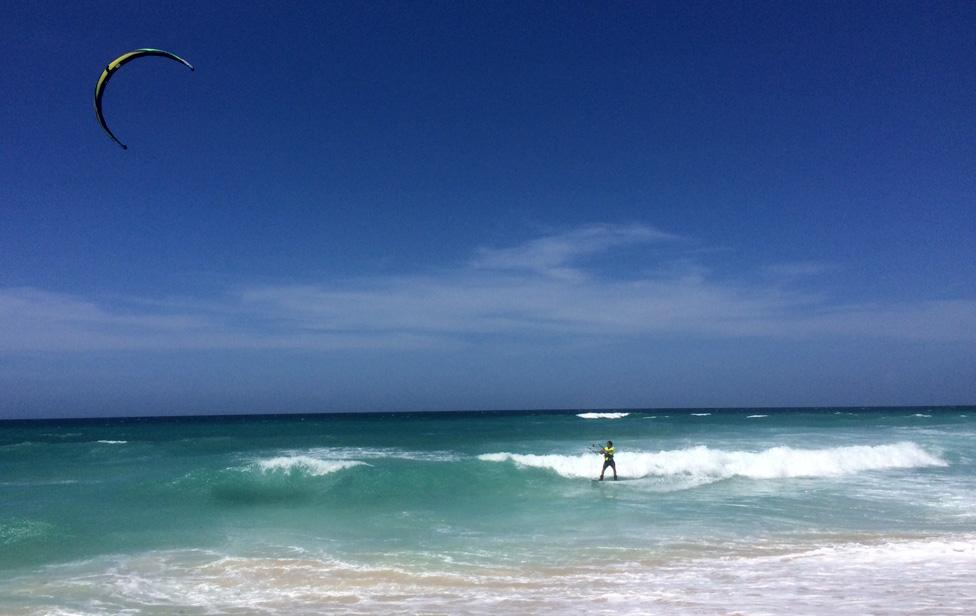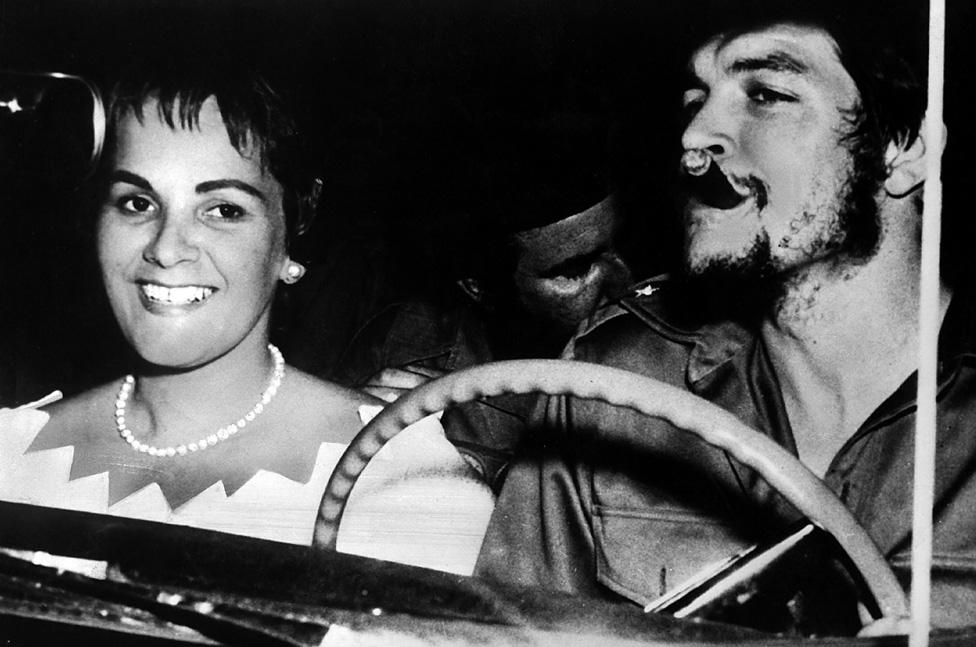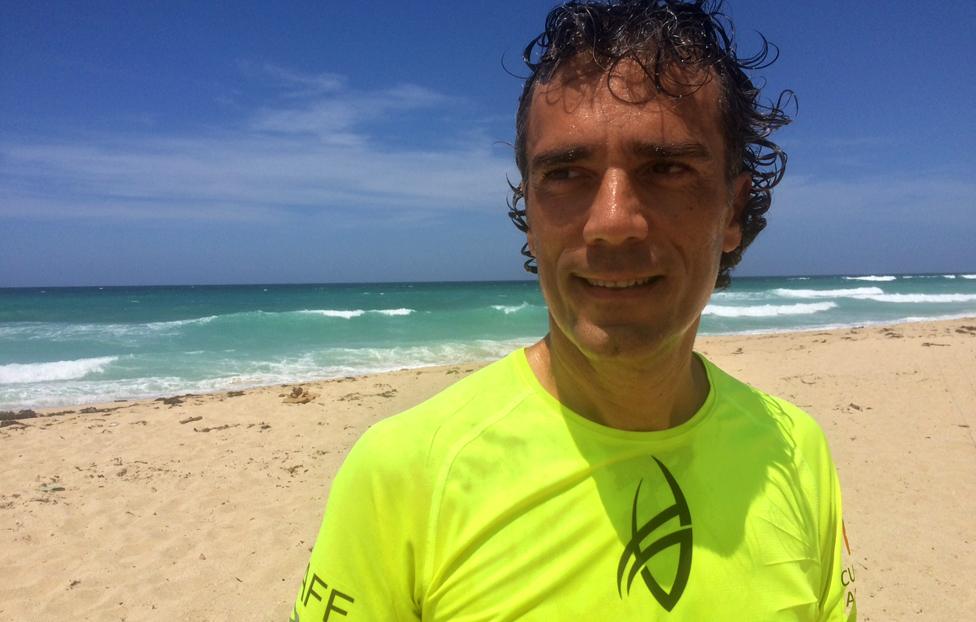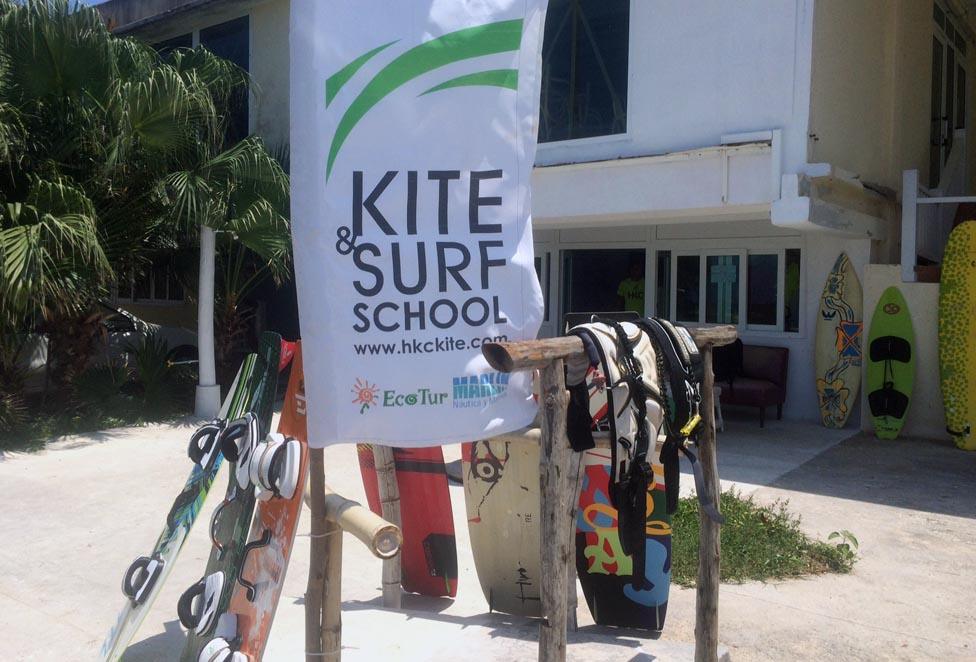How Che Guevara's home became a kitesurfing haven
- Published

Once a seaside getaway for Cuba's wealthy and the honeymoon home of Che Guevara, Tarara is now becoming a centre for kitesurfing and other water sports.
Shortly after the Cuban revolutionaries took power in Havana, Ernesto "Che" Guevara suffered an acute asthma attack. To recover, he moved out to a house in a small resort outside the capital called Tarara.
Pristine Caribbean beaches, crystal-clear waters and - crucially for Che's lungs - clean coastal air, Tarara's unique microclimate was the perfect setting in which to recuperate from the months of jungle warfare against Fulgencio Batista's army. By all accounts, Guevara didn't rest much, holding long meetings late into the night with his comrades.
Still, his wife, Aleida March, remembers their few weeks in Tarara fondly:
"We only lived in that house for two months and, although it never became much of a home, I have happy memories of that time," she wrote in her autobiography.

So much so that the couple returned to the resort for a short honeymoon a few months later.
Built in the 1940s and 1950s, Tarara began life as a seaside getaway for Havana's wealthy families and the military elites of Batista's government. In fact, the house where Che Guevara stayed had previously belonged to "a customs official with links to the dictatorship", wrote March.
But once Fidel Castro took over, most of the residents fled into exile or were forced out.
Today most of the 500 homes in Tarara belong to the state. Many are in disrepair, frozen in time as though the families who lived in them in 1959 had only just gathered together their belongings and made their hasty exit to Miami.
The small town has played a number of roles over the years.
At the height of the Cold War, it housed Soviet officials working as government advisors in Cuba. But after the fall of the Berlin Wall, the resort was used by an altogether more needy group of visitors from the former Soviet bloc.
Thousands of children affected by the Chernobyl nuclear disaster of 1986 came to Tarara as part of a government-run treatment programme. From 1990, the wards of the Tarara Paediatric Hospital were full of children from Russia, Ukraine and Belarus, many suffering from cancers and incurable skin conditions, hoping to benefit from the same restorative airs as Che Guevara decades earlier.
More recently, patients from Venezuela have received cataract treatment at the resort as part of the renowned "oil-for-doctors" agreement in which Cuba pays for Venezuelan oil with healthcare.

A group of Ukrainian children in Tarara in 2006 - they were affected by the Chernobyl disaster
But take a drive around Tarara today and you're unlikely to find many Venezuelan eye patients or children from Ukraine, but rather kitesurfing enthusiasts from around the world. The small resort boasts the ideal wind conditions for water sports and gradually word is getting out.
"There's very big potential for kite-surfing in Cuba, but especially here in Tarara," says Matteo Gatti, a tousled-looking 40-something Italian who's the brains behind the town's new surfer identity. "We want to make this a sports village where people come to do kitesurfing, paddleboarding, wakeboarding, yoga and cycling."
"During the hurricane season in Cuba, there is a very good side-on wind and the beaches are empty," says Gatti, his Cuban-Spanish inflected with Italian. "By day you can kitesurf and at night you can go dancing, go to restaurants or see a concert because Havana is just 10 minutes away. They're perfect conditions."
Gatti may be right. As holiday destinations go, the location could hardly be better.

Matteo Gatti set up his kitesurfing club in 2012
But it won't be easy to realise his dream of turning Tarara into a Caribbean hub for extreme water sports.
He's got the timing right, as Cuba gradually opens its doors to foreign investors, especially in tourism. But he has had to wade through layers of bureaucracy and paperwork to obtain the rights to operate his fledgling business, Havana Kitesurf Club, out of a little office in Tarara.
"We have this permission from the government because I use Cuban people, Cuban instructors," he explains. Later, one of them, Julio, gives me my first lesson on the shore.
He shows me how to manoeuvre the vast multicoloured kite by imagining the hands of the clock in the sky and weaving it back and forth around the 12 o'clock position.
The idea of manipulating the cumbersome frame while riding a surfboard out at sea seems pretty daunting. For now, I just focus on avoiding bringing it crashing down on the few sunbathers enjoying a picnic on the beach.
"We're organising an international kitesurfing competition here next year," Gatti tells me, his enthusiasm infectious.
One wonders what Che would make of a worldwide surf contest in his honeymoon home. Then again, one wonders what he'd make of all the recent changes in Cuba.

How to listen to From Our Own Correspondent, external:
BBC Radio 4: Saturdays at 11:30. Listen online or download the podcast.
BBC World Service: At weekends - see World Service programme schedule or listen online.
Subscribe to the BBC News Magazine's email newsletter to get articles sent to your inbox.